“The Lun-class ekranoplan (NATO reporting name Duck) was a ground effect vehicle (GEV) designed by Rostislav Evgenievich Alexeev and used by the Soviet and Russian navies from 1987 until sometime in the late 1990s. It “flew” using the lift generated by the ground effect of its large wings when close to the surface of the water – about four metres or less. Although they might look similar and/or have related technical characteristics, ekranoplans like the Lun are not aircraft, seaplanes, hovercraft, or hydrofoils – ground effect is a separate technology altogether. The International Maritime Organization classifies these vehicles as maritime ships. The name Lun comes from the Russian for harrier.
The Lun was powered with eight Kuznetsov NK-87 turbofans, mounted on forward canards, each producing 127.4 kN (28,600 lbf) of thrust. It had a flying boat hull with a large deflecting plate at the bottom to provide a “step” for takeoff. Equipped for anti-surface warfare, it carried the P-270 Moskit (Mosquito) guided missile. Six missile launchers were mounted in pairs on the dorsal surface of its fuselage with advanced tracking systems mounted in its nose and tail. The only model of this class ever built, the MD-160, entered service with the Black Sea Fleet in 1987. It was retired in the late 1990s and is now sitting unused at a naval station in Kaspiysk. The Russian Defense Ministry has no plans to revive the project. Another version of Lun was planned for use as a mobile field hospital for rapid deployment to any ocean or coastal location. It was named the Spasatel (“Rescuer”). Work was about 90% done, when the military funding ended, and it was never completed”. – Wikipedia
The Lun was powered with eight Kuznetsov NK-87 turbofans, mounted on forward canards, each producing 127.4 kN (28,600 lbf) of thrust. It had a flying boat hull with a large deflecting plate at the bottom to provide a “step” for takeoff. Equipped for anti-surface warfare, it carried the P-270 Moskit (Mosquito) guided missile. Six missile launchers were mounted in pairs on the dorsal surface of its fuselage with advanced tracking systems mounted in its nose and tail. The only model of this class ever built, the MD-160, entered service with the Black Sea Fleet in 1987. It was retired in the late 1990s and is now sitting unused at a naval station in Kaspiysk. The Russian Defense Ministry has no plans to revive the project. Another version of Lun was planned for use as a mobile field hospital for rapid deployment to any ocean or coastal location. It was named the Spasatel (“Rescuer”). Work was about 90% done, when the military funding ended, and it was never completed”. – Wikipedia

The Lun-class Ekranoplane was used by the Soviet Navy starting in 1987, and wasn't retired until the late 1990s, after the Soviet Union's fall. (Photo by Igor113)

At nearly 243 feet long – and at almost the size of the Spruce Goose – the Lun is a ground-effect aircraft that can only fly near the surface of the sea. (Photo by Igor113)
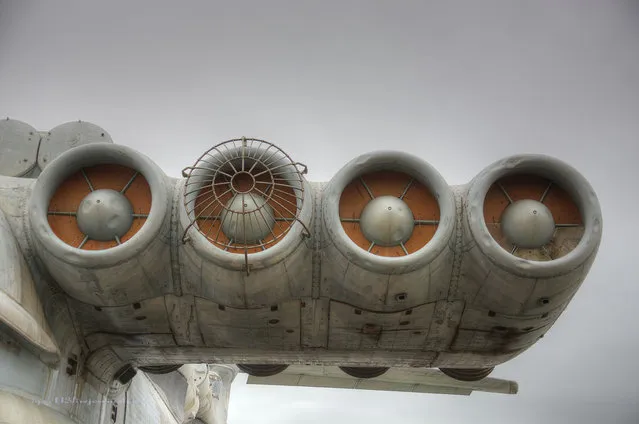
Eight turbofans producing 28,600 pounds of thrust apiece are mounted at the nose of the vehicle. (Photo by Igor113)
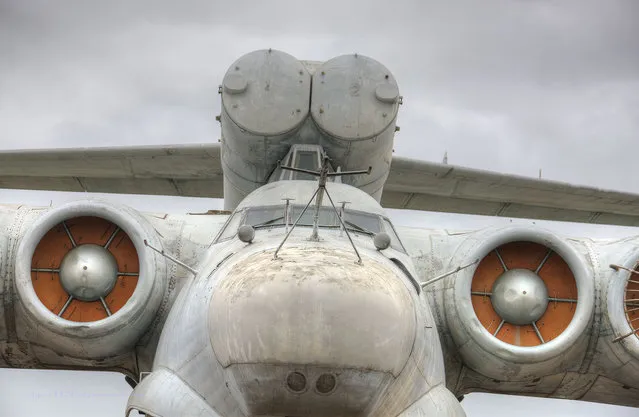
It was built for anti-surface warfare in the event of a European invasion or an unexpected attack from NATO forces. (Photo by Igor113)

The vessel carried six P-270 Moskit guided missiles – armed with nuclear warheads. (Photo by Igor113)
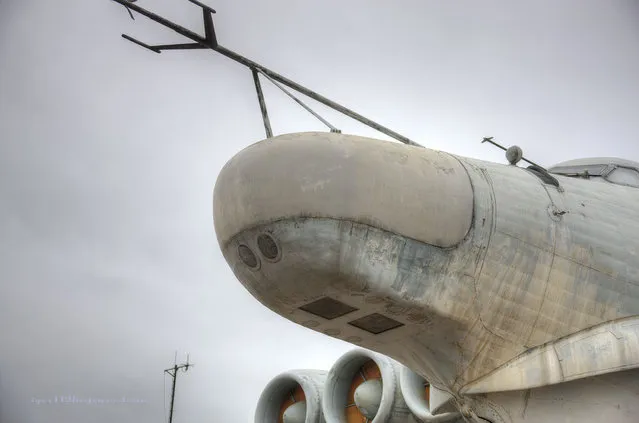
Its nose and tail concealed the most cutting-edge tracking systems and radar of the day. (Photo by Igor113)
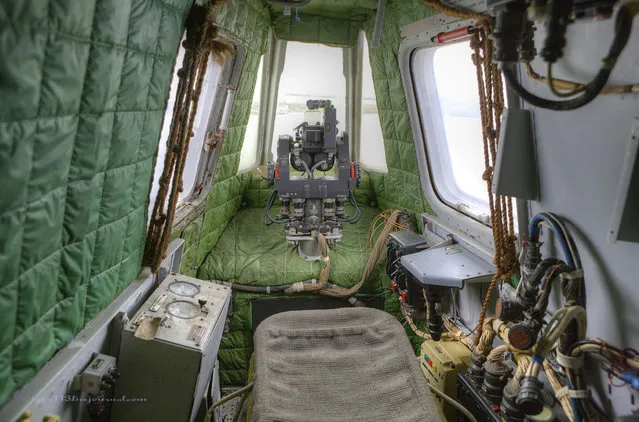
Another version of the Lun was slated to be a highly-mobile, fast-moving field hospital. (Photo by Igor113)

... but funding for the medical version never materialised, and the plane was never built. (Photo by Igor113)

The “wing-in-ground” effect allows the fully-loaded 2 million pound aircraft to fly low over the water – and even get decent fuel economy for a vehicle of its massive size. (Photo by Igor113)

It was the first hovercraft to use turbojet power, and the first vehicle of its type to be operated successfully. (Photo by Igor113)

The Lun could only fly at incredibly low altitude, and could not travel any higher than the length of its wings. (Photo by Igor113)
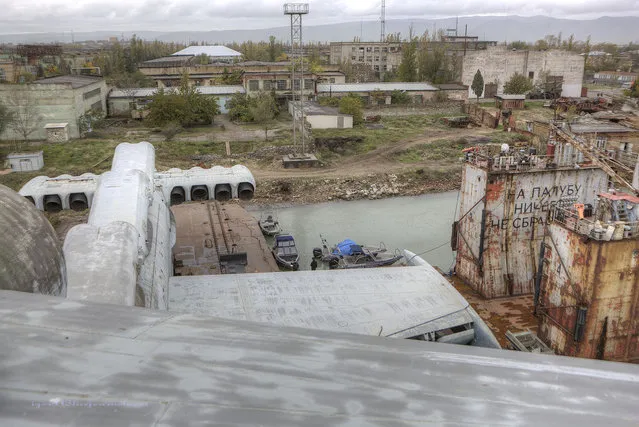
The Lun could carry 15 officers, flying 340 mph and reaching a maximum operational range of 1,240 miles. It could only ever reach an altitude of 16 feet. (Photo by Igor113)
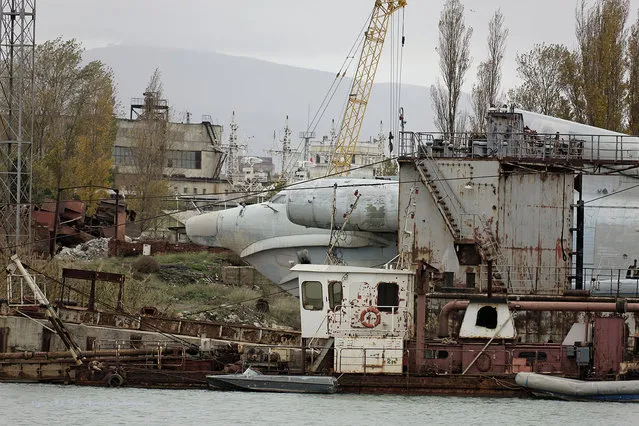
These kinds of “Ground Effect Vehicles” are twice as efficient as traditional aeroplanes and can carry twice as much weight. (Photo by Igor113)

The Ekranoplane can carry hundreds of tons of cargo and troops, in addition to anti-ship and anti-submarine munitions and nuclear arms. A fleet of them would have allowed for a potential European invasion. (Photo by Igor113)

Though it has a tail gunner, the low-flying Lun would likely require fighter support as well. (Photo by Igor113)

Though it can avoid mines and torpedoes, the hulking vehicle is vulnerable from the air. (Photo by Igor113)
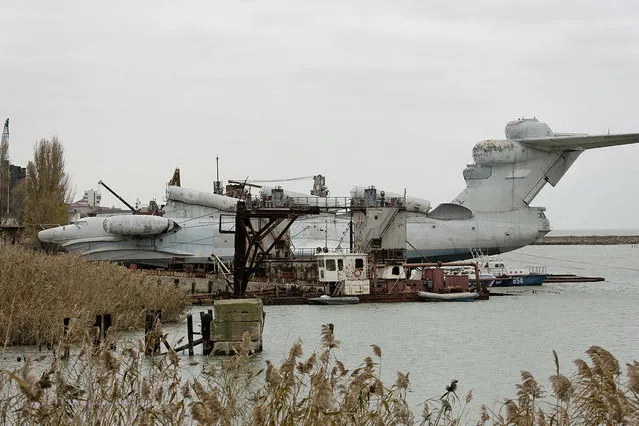
This is the only existing complete Lun. As of early 2012, it sat in Kaspiysk, Russia on the coast of the Caspian Sea. (Photo by Igor113)

Today's state-of-the-art weapons are even more complicated than the Ekranoplane. (Photo by Igor113)
08 Aug 2014 10:51:00,
post received
0 comments
